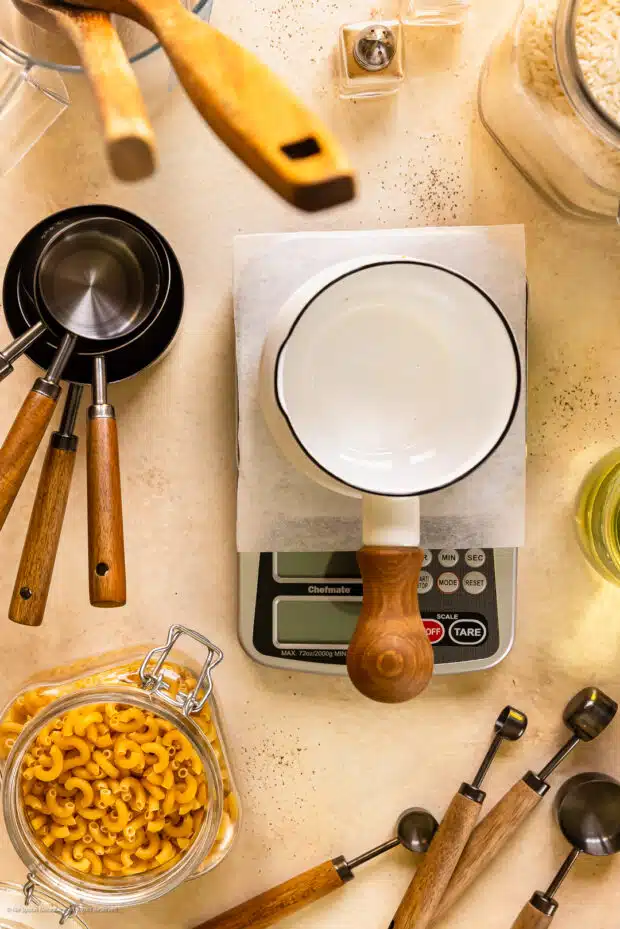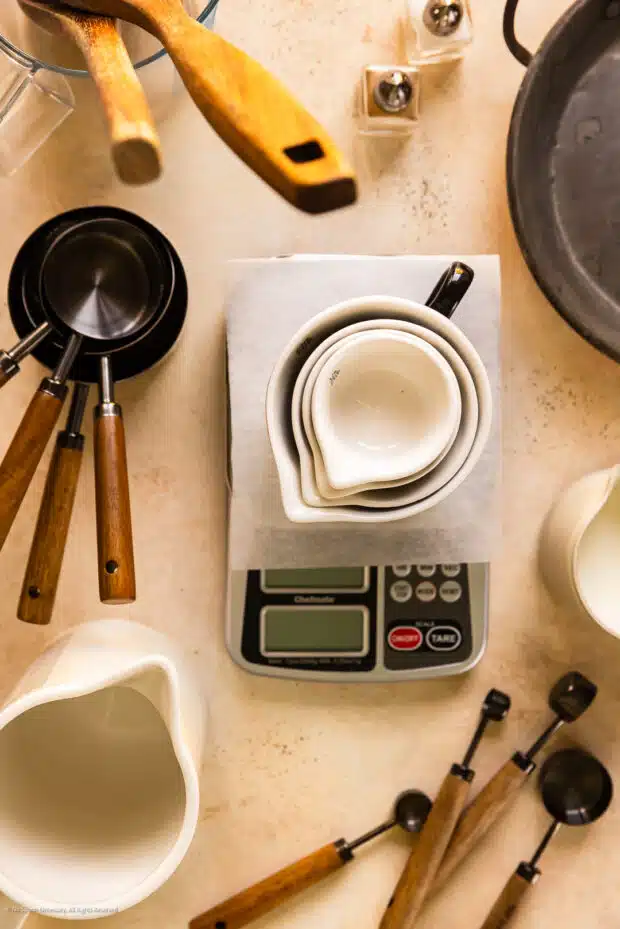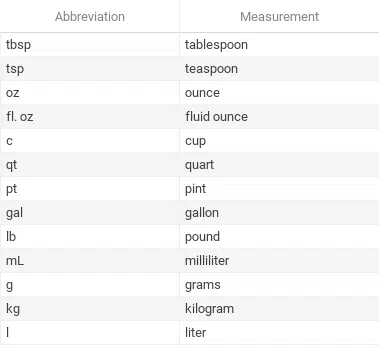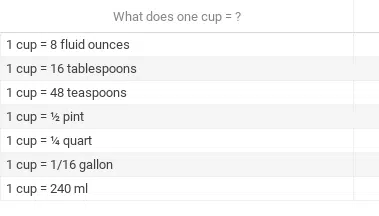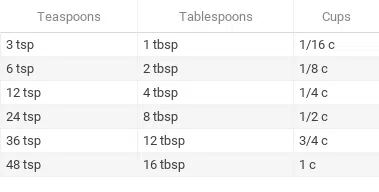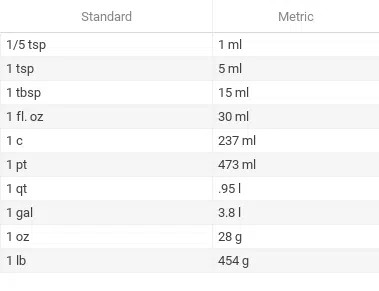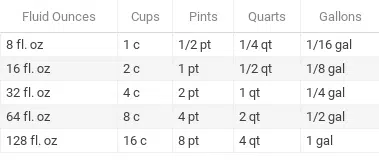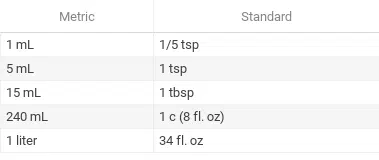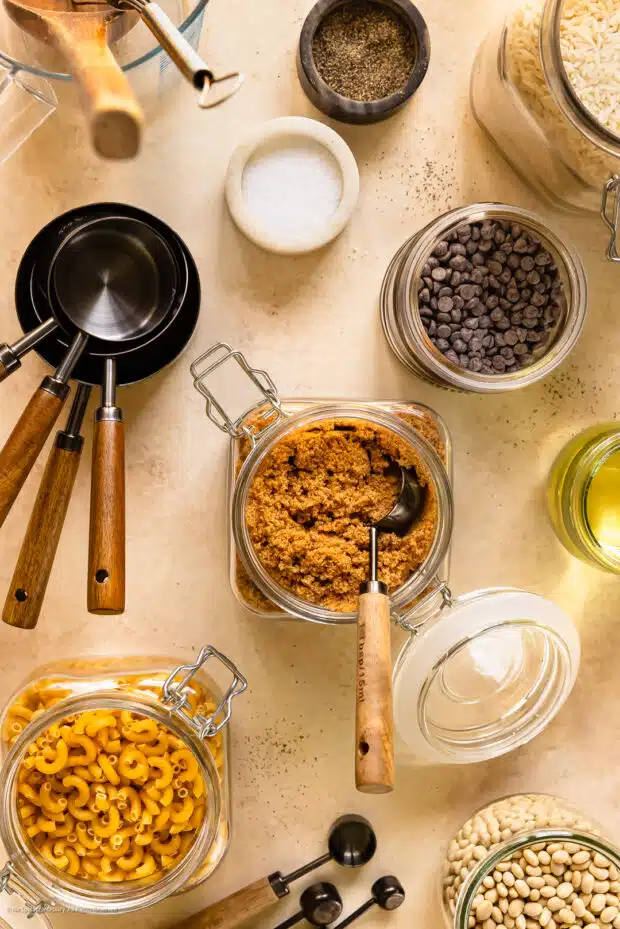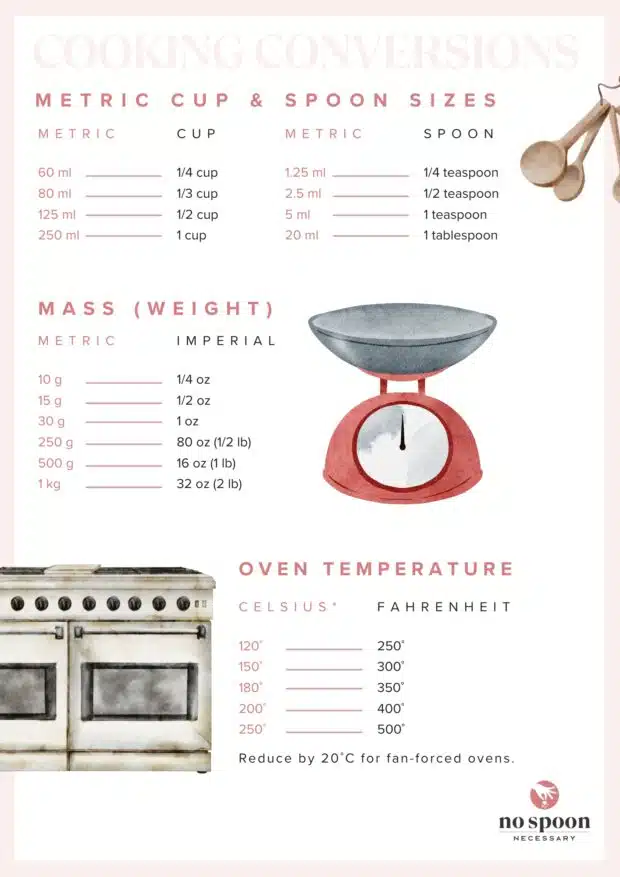This post may include affiliate links. Thank you for your support.
If you’ve ever found yourself staring at a recipe, scratching your head over common measurements, you’re in good company. We’ve all been there! Use this free kitchen measuring conversion chart for cooking. Avoid confusion and achieve culinary success every time with this straightforward printable kitchen chart for measuring conversions!
Table of Contents
Why you’ll love this kitchen conversion chart for cooking
Cooking is a delightful blend of art and science, and understanding these common cooking conversions is like having your own secret ingredient for success in the kitchen. And it makes converting larger quantities to smaller quantities (or vice versa!) a breeze!
So, whether you’re mixing margaritas, making avocado egg toast for a crowd, whipping up a savory soup recipe, or experimenting with international dishes from around the world, these kitchen measuring conversions are your trusty kitchen companions.
I suggest you print out the measurement equivalents chart, laminate it (you can get Office Depot to laminate it for you, or use these handy sheets), then stick it to your fridge or somewhere you can easily see it next time you’re cooking. The lamination will make it easy to clean if you get any spatters or fingerprints on it. 😉
No more pulling out your phone when you have raw chicken hands or having to go use the computer. This kitchen measurement conversion chart covers alllllllll the standard measurements you’d need to know for cooking.
Are you looking for common baking measurements? Check out my Bakers Conversion Chart to convert sweet recipes, like cookies, pies, and cake. It covers converting common ingredients, like butter, brown sugar, and all purpose flour. As well as cake pan conversions, oven temperatures, and converting degrees Fahrenheit and Celcius.
Cooking measurement abbreviations
When you are following a recipe – whether it be mine, your neighbors, or your grandmothers – it’s imperative you understand cooking terms, such as dash or pinch, and abbreviations. Most recipes (including mine) will use shorthand abbreviated terms to write out recipes. An example of a cooking abbreviation is “qty”, which refers to quantities.
Having a strong understanding of what these abbreviations mean will ensure you don’t end up making major mistakes and ruining your dish!
Note: I cover baking conversions and weights in a separate article. However, we are discussing abbreviations, so it may be helpful to know that “net oz” or “net wt oz” refers to net weight. The net weight simply means the total weight (gram, ounce, or pound) of an item without the addition of the container or product packaging.
What does one cup equal?
If you’re wondering how to convert one cup size into other exact measurements, this section has got all the 1 cup cooking measuring conversions covered.
How many cups are in a quart?
A quart (qt) is equivalent to 4 cups. This specific type of conversion often comes in handy when you’re scaling up a recipe to feed a hungry crowd. It’s also great if you tend to amass delitainers from your takeout deliveries.
How many ounces are in a cup?
There are 8 ounces in a cup. So, if you need to measure out 1 cup of something, it’s the same as 8 fluid ounces (fl oz).
How many tablespoons are in a cup?
In a cup, you’ll find 16 tablespoons (TBS, tbl, or tbsp). That means 1/4 cup = 4 tablespoons.
How many teaspoons are in a tablespoon?
You’ll use measuring spoons for both baking and cooking recipes, so it’s important to have a firm grasp on these measurements.
There’s 3 teaspoons (tsp) in 1 tablespoon (TBS or tbsp). For all you math whizzes out there, that means 1/4 cup = 12 teaspoons!
How many milliliters are in a cup?
For our metric-minded friends, 1 cup equals 240 milliliters (ml). This is handy for following international recipes or if you prefer metric measurements.
How many grams are in a cup?
The weight of a cup varies depending on what you’re measuring. For instance, a cup of flour weighs around 120 grams, while a cup of sugar is roughly 200 grams. I’d recommend investing in a kitchen scale and using the weight measurements given in a recipe. At the very least, check a kitchen measuring conversion chart for the specific ingredient you’re using.
Common dry measurements
Understanding basic cooking measurements is imperative to success in the kitchen. It’s going to be very difficult to follow a recipe if you aren’t sure what it means. However, you don’t need to wing it or make flash cards to memorize dry measurement conversions.
When it comes to dry ingredients and dry measuring cups, the most important ones to remember are these:
1 tablespoon = 3 teaspoons
1/4 cup = 4 tablespoons
And vice versa: 3 teaspoons equals 1 tablespoon; 4 tablespoons equals 1/4 cup.
US to Metric conversions
I’m in the United States, so you will find that I use the standard measurement system, also known as the Imperial system. Therefore, I measure all my ingredients out using teaspoons, tablespoons, cups, pounds, etcetera. However, I’m aware that most of the world uses the other measuring system – the Metric system. But, this is where things get weird, because a lot of American Chef’s (me included) will measure baking items in grams – and measure cooking items in teaspoons, tablespoons, etc.
Honestly, you don’t need to worry about ANY of this if you have handy-dandy cooking measuring conversions charts! Which you do, just scroll down and print or download your kitchen measuring conversion chart now.
Until then, here’s a reference chart so you know what you’re getting into.
Standard imperial to metric conversions:
Common liquid measurement conversions
While you can measure liquids by weight ounces and volume ounces, it’s easier to use a calibrated liquid measuring cup. In this section we will liquids, fluids, volume ounces, as well as metric volume conversions.
How many quarts are in a gallon?
A gallon holds 4 quarts. Next time you’re making a big batch of soup or stocking up on milk, keep in mind that 1 gallon = 4 quarts (or 4 tall delitainers 😉 ).
How many milliliters are in a liter?
The prefix “mili-” means 1000. So, when a recipe calls for a liter, you can easily measure out 1000 milliliters.
How many ounces are in a pint?
In a pint, you’ll find 16 fluid ounces (oz). This is useful when you’re dealing with liquid ingredients, like vegetable oil; or liquids, juices, and liquors, especially when making cocktails or sauces.
How many cups are in a pint?
There are 2 cups in a pint. And, if you remember from above, that means that there are 8 liquid ounces in a cup!
As you embark on your culinary journey armed with these handy cooking conversions, remember you’re not just a chef; you’re a culinary math whiz! Your kitchen is your laboratory, and you’re the smarty pants who can turn simple ingredients into delicious masterpieces, one conversion at a time.
Keep that apron on, and may your culinary creations be as precise as a well-executed formula. Until our next delicious adventure, remember: kitchen conversions are as easy as π! 🍽️📏✨🍰
Cheyanne
Craving MORE? Follow all the deliciousness on Facebook, Pinterest and Instagram!
More free culinary and kitchen resources!
- 14 Types of Fresh Herbs and How to Use Them in The Kitchen
- The Three Best Ways for Storing Fresh Herbs
- Learn How to Stock the Pantry For Easy Home Cooking
- Meat Temperature Cooking Chart
- Halve or Half Any Recipe
- Recipe Substitutions
- Food for Big Groups
Free cooking conversions kitchen chart
Here’s your handy-dandy cooking measuring conversions chart for you to print or download at your convenience:
Get your free printable kitchen measuring conversion chart here: Conversion Chart
Article references
- Gisslen, W., Griffin, M. E., & Bleu, L. C. (2006). Professional Cooking for Canadian Chefs. John Wiley & Sons.
- America, C. I. O. (2011). The professional chef. John Wiley & Sons.

